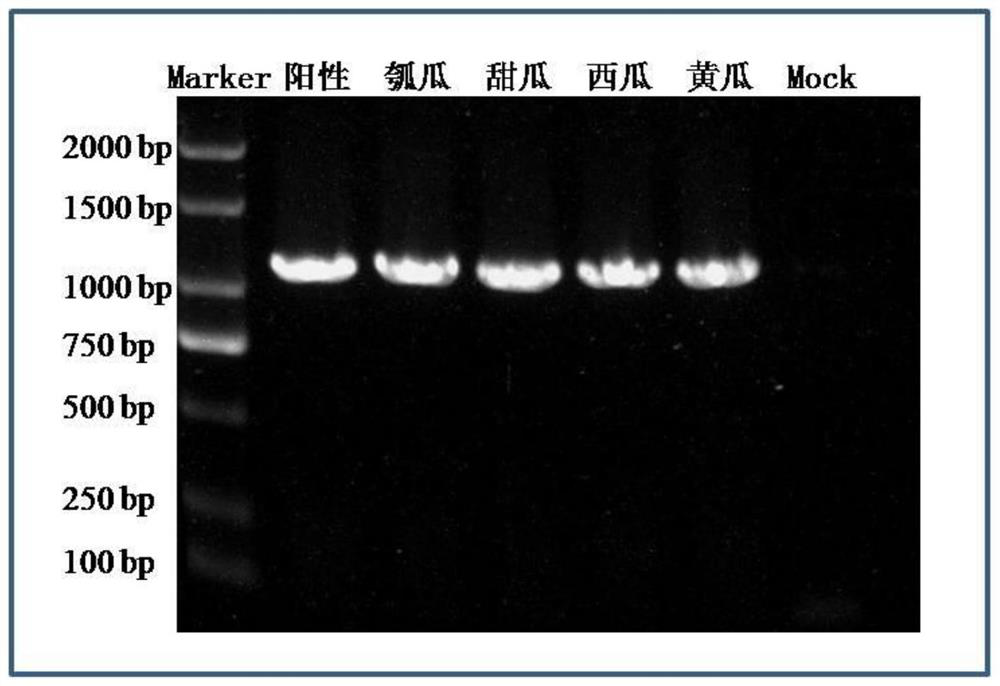Infectious clone recombinant vector of melon aphid-borne yellows virus
A technology of recombinant vectors and yellowing viruses, applied in the direction of viruses/bacteriophages, viruses, viral peptides, etc., can solve the problems of mechanical inoculation, limitation of pathogenicity and host disease resistance research, etc., to improve credibility, Guarantee the effect of uniqueness and stability
- Summary
- Abstract
- Description
- Claims
- Application Information
AI Technical Summary
Problems solved by technology
Method used
Image
Examples
Embodiment Construction
[0055] A method for constructing an infectious cloning recombinant vector of a melon aphid-transmitted yellowing virus, comprising the following steps:
[0056] (1) Extraction of plant total RNA
[0057] Extract plant total RNA from gourd leaves infected with melon aphid-borne yellowing virus. For specific operations, refer to the instructions of the RNAsimple Total RNA Extraction Kit (TIANGEN, DP419);
[0058] (2) Synthesis of cDNA
[0059] Use the total plant RNA extracted in (1) as a template and Random Primer as a primer to synthesize cDNA, as follows: first add 1 μL Random Primer (50 μmol / L), 1 μL dNTP (10 mmol / L each), 1 μL RNA and 7 μL RNase free dH 2 O, mix well, place the system at 65°C for 5min and place it on ice immediately; then add 4μL 5×PrimeScriptII RT Buffer, 1μL PrimeScript II Reverse Transcriptase (200U / μL), 0.5μL RNase Inhibitor (40U / μL) to the system ) and 4.5 μL RNase free dH 2 O, mix well, put the system at 30°C for 10min, 42°C for 1h, and 70°C for 1...
PUM
 Login to View More
Login to View More Abstract
Description
Claims
Application Information
 Login to View More
Login to View More - R&D
- Intellectual Property
- Life Sciences
- Materials
- Tech Scout
- Unparalleled Data Quality
- Higher Quality Content
- 60% Fewer Hallucinations
Browse by: Latest US Patents, China's latest patents, Technical Efficacy Thesaurus, Application Domain, Technology Topic, Popular Technical Reports.
© 2025 PatSnap. All rights reserved.Legal|Privacy policy|Modern Slavery Act Transparency Statement|Sitemap|About US| Contact US: help@patsnap.com



